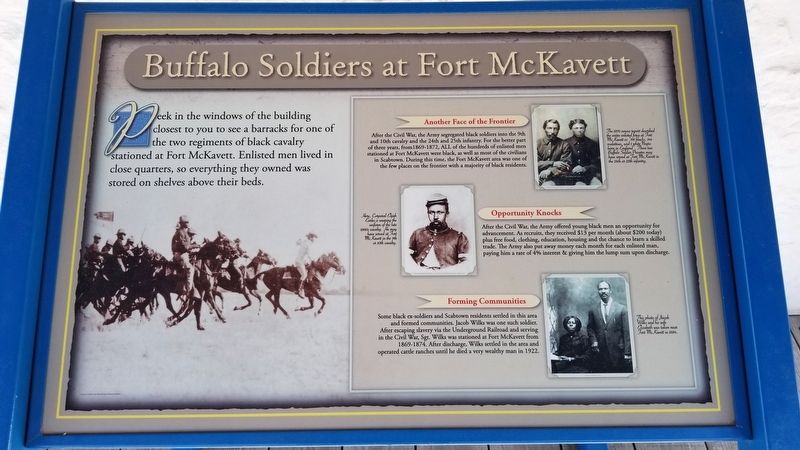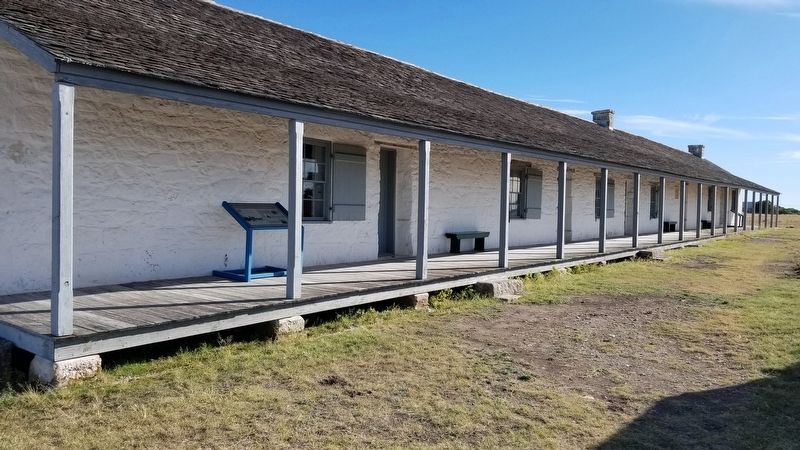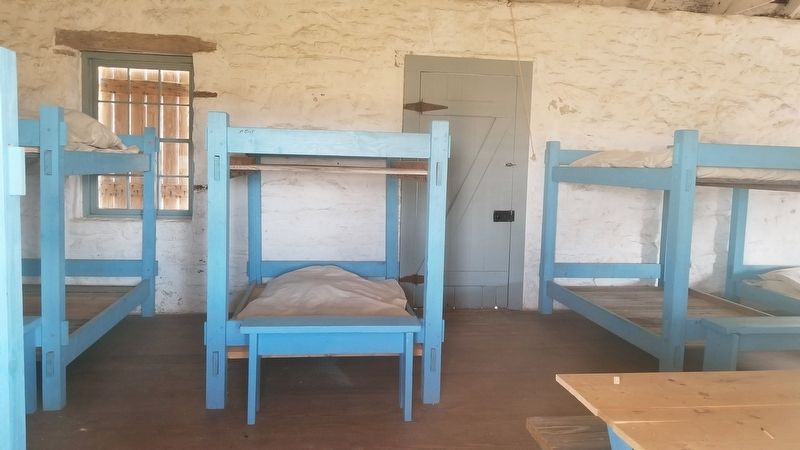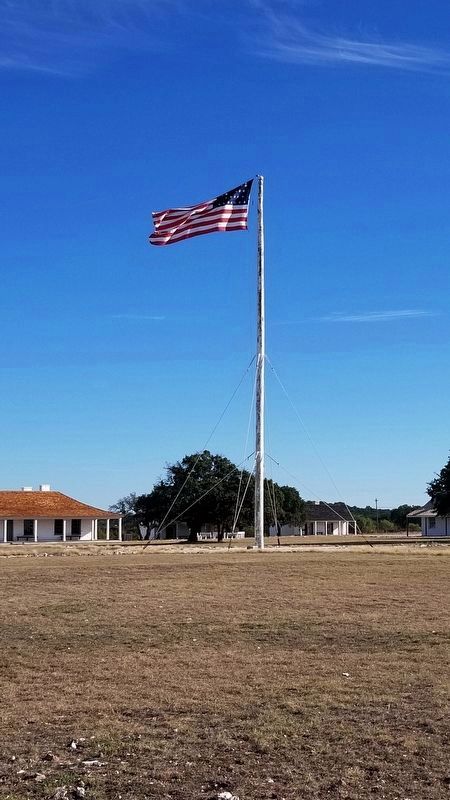Fort McKavett in Menard County, Texas — The American South (West South Central)
Buffalo Soldiers at Fort McKavett
Peek in the windows of the building closest to you to see a barracks for one of the two regiments of black cavalry stationed at Fort McKavett. Enlisted men lived in close quarters, so everything they owned was stored on shelves above their beds.
Another Face of the Frontier
After the Civil War, the Army segregated black soldiers into the 9th and 10th cavalry and the 24th and 25th infantry. For the better part of three years, from 1869-1872, ALL of the hundreds of enlisted men stationed at Fort McKavett were black, as well as most of the civilians in Scabtown. During this time, the Fort McKavett area was one of the few places on the frontier with a majority of black residents.
Opportunity Knocks
After the Civil War, the Army offered young black men an opportunity for advancement. As recruits, they received $13 per month (about $200 today) plus free food, clothing, education, housing and the chance to learn a skilled trade. The Army also put away money each month for each enlisted man, paying him a rate of 4% interest & giving him the lump sum upon discharge.
Forming Communities
Some black ex-soldiers and Scabtown residents settled in this area and formed communities. Jacob Wilks was one such soldier. After escaping slavery via the Underground Railroad and serving in the Civil War, Sgt. Wilks was stationed at Fort McKavett from 1869-1874. After discharge, Wilks settled in the area and operated cattle ranches until he died a very wealthy man in 1922.
Captions
The 1870 census report described the entire enlisted force at Fort McKavett as 191 blacks, 144 mulattoes, and 1 white negro born in England. These two Buffalo Soldier Privates may have served at Fort Mc Kavett in the 24th or 25th infantry.
Here, Corporal Elijah Earles is wearing the uniform of the late 1860s cavalry. He may have served at Fort McKavett in the 9th or 10th cavalry.
This photo of Jacob Wilks and his wife Elizabeth was taken near Fort McKavett in 1884.
Erected by Fort McKavett State Historical Park.
Topics and series. This historical marker is listed in these topic lists: African Americans • Forts and Castles • Wars, US Indian. In addition, it is included in the Buffalo Soldiers series list. A significant historical year for this entry is 1922.
Location. 30° 49.658′ N, 100° 6.441′ W. Marker is in Fort McKavett, Texas, in Menard County. Marker can be reached from the intersection of Farm to Market Road 864 and Ranch to Market Road 1674. The marker is located in the northeastern section of the Fort McKavett State Historical Park. Touch for map. Marker is at or near this postal address: 7066 FM 864, Fort Mc Kavett TX 76841, United States of America. Touch for directions.
Other nearby markers. At least 5 other markers are within 2 miles of this marker, measured as the crow flies. The Enlisted Men (within shouting distance of this marker); Cramped Quarters (about 400 feet away, measured in a direct line); Home on the Range (about 600 feet away); Site of Fort McKavett (approx. 0.3 miles away); Colonel Black Ranch House (approx. 1˝ miles away).
Also see . . . Buffalo Soldiers.
Buffalo soldiers was the name given by the Plains Indians to the four regiments of African Americans, and more particularly to the two cavalry regiments, that served on the frontier in the post-Civil War army. More than 180,000 black soldiers had seen service in segregated regiments in the Union Army during the Civil War, and many units had achieved outstanding combat records. Source: The Handbook of Texas(Submitted on June 25, 2021, by James Hulse of Medina, Texas.)
Credits. This page was last revised on June 26, 2021. It was originally submitted on June 25, 2021, by James Hulse of Medina, Texas. This page has been viewed 332 times since then and 36 times this year. Photos: 1, 2, 3, 4. submitted on June 26, 2021, by James Hulse of Medina, Texas.



